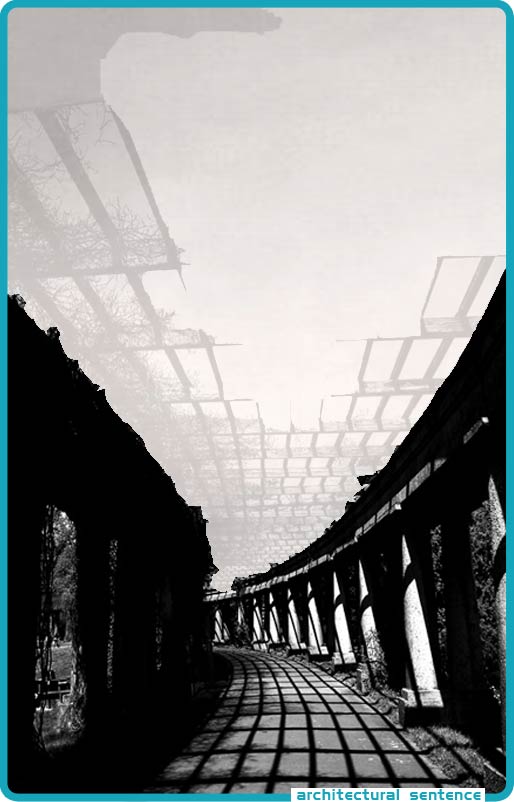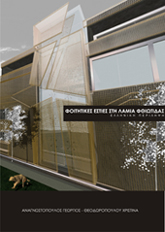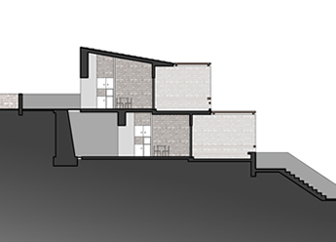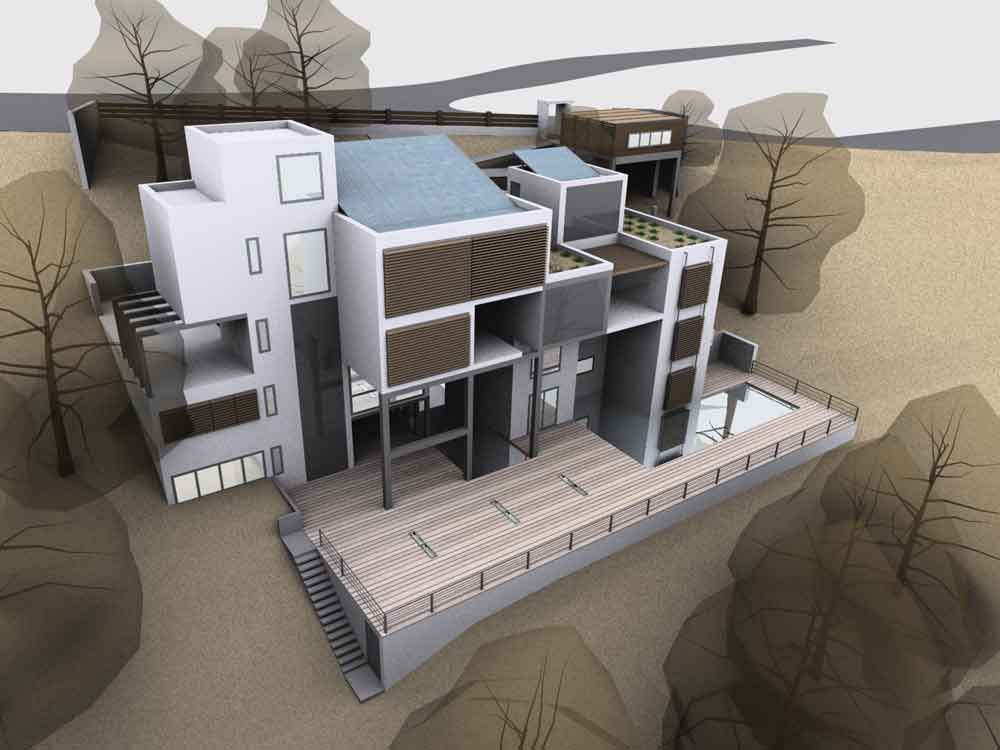

This present thesis, is regarding our interventions in the Larissa and Peloponnese railway station area in Athens.Our aim was to link the two zones that are situated on the both sides surrounding the area that is traversed by the railway tracks, by settling the railway tracks underground, building a new railway station and therefore regenerate the "new" area that will merge on the urban web's surface.
Our intention is to unify the area, by taking advantage of the natural altitudinal differences, thus creating spaces - passages - "streets" for the pedestrians and the cars, reshape the area landscape based on the railway tracks reminiscence in the area and to attach new spatial uses linked to the new railway station that will be constructed.
Supervisors: Papadopoulos Spiros, Trova Vasso
Reference Number: 241


The property of singroy is found on the borders of municipalities’ amarousio, kiffisias and meission and is 12km north westerley from the center of athens.
It has a total extent of 970.000 square meter of which the 700.000 square meter are pine forest and the 200.000 square meter are agricultural extents. In the extents which remain, the villa of singrou, the church of st andreas and a cow shed have been erected. These buildings are appreciated to be the work of german architect ernesto tsiller (1837-1923) and are dated from 1880.
The present diplomatic aims are the emergance and transformation of the singrou property into a green area, where sports, entertainment and cultural events will be combined and finally respecting the application of the bequest the utilization of the agricultural facilities.
Sports fields, swimming pools, facilities for outdoor recreational activities, kiosks, walking paths as well as cycling paths will be added on the borders of the property. Finally the re-establishment of the existing greenhouses where visitors of an agricultural nature can take part in various workshops.
These inerventions will take place only on the borders of the property and will not intervene internally so as to strengthen and enhance the existing form of the park. For this reason the existing alleys, the church of st. andreas, the amphitheater and the sigrou villa will be maintained with the latter being transformed into a library.
Supervisor: Stylidis Iordanis
Reference Number: 251


In the 250 years of rehabilitation architecture’s history, there have been several systems of rehabilitation architecture. In each of the buildings constructed with every system, we are able to identify the influence of the ideas and ideologies of each era concerning the detainees. Architects were frequently called upon to create facilities according to a social and cultural axis, and not according to what would be best for the detainees held within the walls of those facilities or in relation to the process of their rehabilitation.
Modern architecture can invent spaces that can also contribute to the rehabilitation process. The Special Rehabilitation Institution for Addicted Persons, is one of the proposed solutions for creating a new category of rehabilitation facilities. Serving as a prototype for the separation of a group of people with special needs, it can accommodate, within its’ 25,000 square meters, all the spaces and features necessary for the making of a great tool in the hands of the science of rehabilitation. At the same time, there is an effort being done for redefining the relationship between the city and the prison. Part of the hospital included in the institution’s facilities is open to the local community, for attending to their emergency and everyday needs.
The upgraded relationship between detainees, the rehabilitation personnel and the city has the goal to incorporate smoothly ex prisoners in the society and help them stay without a problem in the society, through the new and improved processes held within this facility.
Supervisors: Lykourioti Iris, Gavrilou Evelyn
Reference Number: 242


The subject of this work is the monastery of Saint Antony in the area of ‘’Petali’’ in Heraklion of Crete, near the village of Kato Assites. The monastery of Saint Antony legally belongs to the near monastery of Saint George of Gorgolaini and it was founded by the time of Venetian sovereignty in the region of Crete, among 15th and 16th century. Today we can find only ruins from the buildings of the ancient monastery and more specifically of the church and the cells. The temple of the monastery consists a very interesting subject of research and offers a wide field of static problems to study due to the variety of damages that characterize its actual situation. This study includes the following stages. Initially includes the collection of all the necessary historical information that comes from bibliographic and personal research. Then follows a detailed documentation and recording of the damages of the temple so that we can classify and study in details all those elements that compose the existing situation of the temple [measurement of all the existing walls of the temple, revelation and numeration of architectural members from the inside and outside of the temple, separation of the different chronological periods of construction of the temple, etc.] Further we analyze the methods of conservation and restoration that we found necessary and we evaluate the actual pathology of the temple. We also propose a partial restoration of the temple by the placement in their initial place of identified architectural members, where this is possible. It is also examined the initial static function of the temple and the possible reasons that contributed to its collapse. Finally in the same time with the proposition of restoration and partial rebuilding of the identified architectural members, we propose the construction of a metal shelter in northern aisle of the temple [this temple is constituted by two aisles] for the better protection of departments that is maintained today even in a form of ruin.
Supervisor: Panetsos Panayotis
Reference Number: 224


This dissertation concerns the creation of a centre of environmental update for the citizens of Larissa and the biological cleaning of water of the river Pineios. The facilities of this centre will constitute a ‘Water Bridge’ that will indirectly unite the two parts of Larissa city. This project concerns not only the river banks of the Pineios, but also the city itself. There will be a complex of buildings where the citizens will be informed and updated about issues concerning the lack of water in the river and the whole process of its biological cleaning.
Another aspect of the project is the removal of the existing footbridge and its replacement by a ‘water bridge’ on the northwest limits of the city. This footbridge is both a limit and an obstacle for the visitors and the activities that take place there. The first objective of this proposal is to attract as many citizens as possible on the riverbank and the other one is the future development, expansion and
landscaping of the abandoned river bank.
Supervisors: Gavrilou Evelyn, Mitroulias Giorgos
Reference Number: 211


“What really matters, considering housing, is that humans need to explore housing from the beginning, from the very first meaning of the term.” Martin Heidegger
Siegfried Giedon (CIAM’s general secretary from 1928 until 1938) noticed that the relationships between people and cities, people and items have a problem resisting the passage of time.
He also noticed the typical movements within the city, that people do (home-work-home) automatically create a shapeless and timeless prison. Everyone is included in this prison and religion, politics, origin play absolutely no role.
It’s quite obvious that architecture has to become the link of the world we live in, because the buildings lose their identity. It is also very difficult to redefine them by their materials. Architecture needs to gather the experiences of the city itself and give it back in a better way. At the same time architecture needs to release the citizens from the iconic prison that they live in.
The way to deal with this prison is to suggest a solution concerning the constructional part of the problem, and not the theoretical that has been already summarized above. Therefore we suggest the construction of halls of student residence, in which the students themselves will “work” like the foundations of the building, like sperm that gives birth to each part of the building, according to anyone needs.
Generally the relations between the buildings and people must (by using the building’s spaces) give the opportunity to humans to develop their personal relationships.
The choice of that kind of building is obvious, as soon as we analyze the two words of the term: Residence because is one of the places that a human, spends his time within the city (in that situation the student between the University and his apartment). But most importantly because is the place where he can make the changes that will improve his quality of life.
Halls-on the other hand- because as Heidegger says, residency is a team effort. It isn’t only the fact that constructing a building needs many different people of the community, in the process, but also that gives the people who live their the opportunity to develop their relationships
Supervisor: Stylidis Iordanis
Reference Number: 218


In the present Diplomatic Work is presented a project about the creation of new installations of hospitality for the students of the Natural Environment School of Aristotelian University. The plot that is proposed is in the entry of the mountainous village Pertouli and it’s in the property of the Aristotelian University. It borders with the Forest Inspection and the offices of the professors and it is runned over a small tributary. For the installations, it is proposed a group of four buildings that forecasts hostel for the students and a hearth of multiple uses. The hostels are organised in three two-storied buildings that include in total 24 three-bed and 24 two-bed rooms. Consequently, there can be accommodated 120 individuals, those who are entering each year in the Natural Environment School. The hearth is a three-level building with two entries. In the ground floor there is dinning space with a kitchen, WC and a balcony having view in an artificial lake. In the first floor of the hearth there is a library, while in the second floor the space is advisable for students meetings, and team working. The buildings and the walls are in their bigger percentage built by stone with wooden elements, and the roofs are covered by traditional stone tiles. The access in the buildings becomes roadly from an entry in the higher point of the plot. The pedestrians can enter in the space from three entries that are surrounding the plot. Also, the project forecasts parking for the vehicles in the northern side of the plot and an open air space which can be used for the concentrations of the students in the south-western side.
Supervisor: Triantafillidis Giorgos
Reference Number: 220


This degree thesis deals with the planning of two low energy consumption houses in Thrakomakedones. The view of the area, which is situated in the foothills of Parnitha, led to the idea of creating a big window- frame in the building site, viewing towards the city of Athens. In the search of creating a number of frames- views, the two- dimensional window evlves into a spatial canvas, which then modulates in harmony with the elements of the energy design of the building, so as to create the living space.
The elements of both the bioclimatic and the energy design, were taken under consideration, since the very beginning of the project. As a result, an atrium was designed, to separate the building into two parts, while in the same time it contributes to the recycling of the air, as well as to the natural cooling. Even more, fotovoltaic systems are used to cover part of the house needs for electricity and solar panels are used to cover part of the house needs for heating. Other elements added, are the planted roofs, the small apertures in the North to create ventilation from end to end and finally, the earth tubes used for natural cooling.
The purpose of this project, is the smooth combination of these bioclimatic and energy design elements, with the architectural, composition design.
Supervisors: Gavrilou Evelyn, Philippitzis Dimitris
Reference Number: 245

